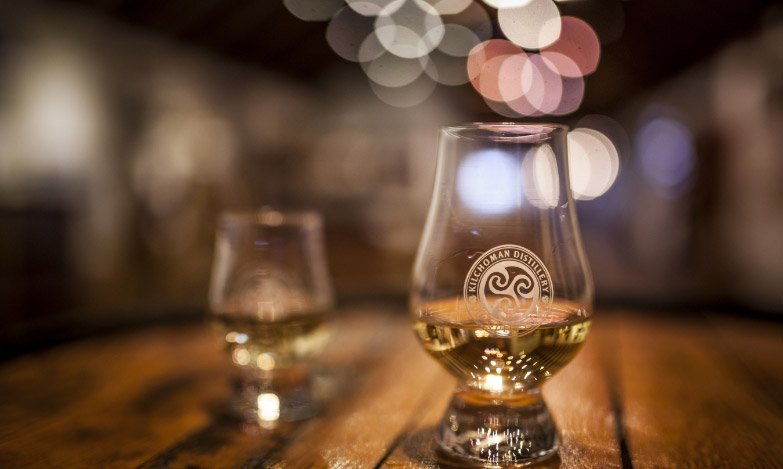BLOG POST, DISTILLERY NEWS
Barley – an interview with Anthony Wills, Founder of Kilchoman Distillery
November 21, 2019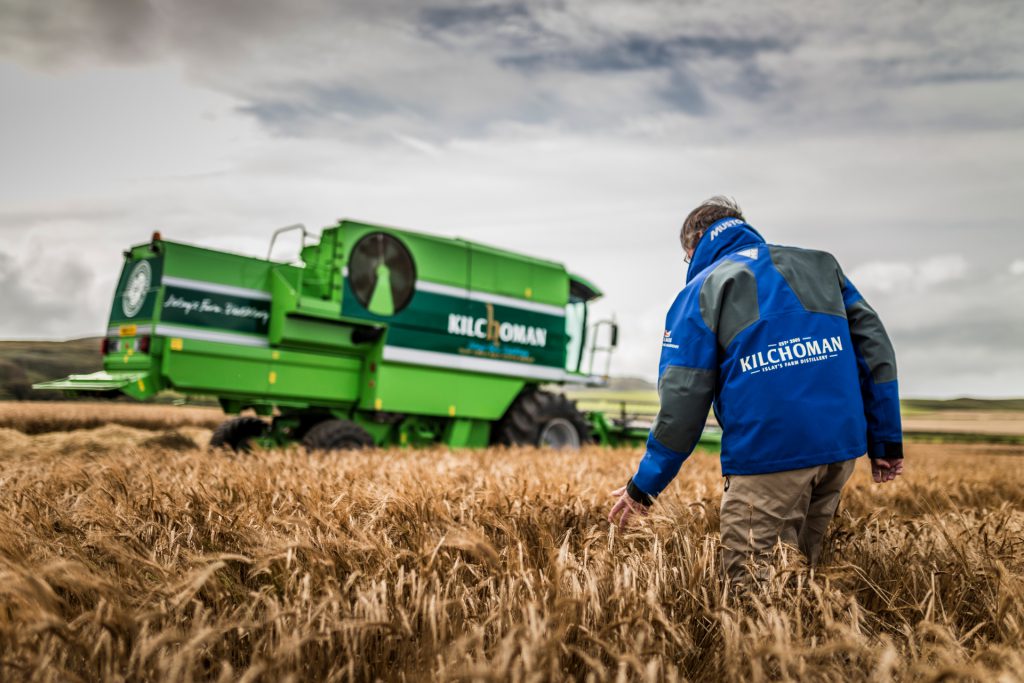
Can you explain some of the challenges of growing barley on Islay?
The main challenge is the weather. We don’t get as much dry weather as the east coast, where most Scottish barley is grown. On Islay there is a lot of wind and sometimes when the barley is ripening, we don’t get as much sun as we want. You need plenty of dry, warm weather and sun to ripen the barley properly but sometimes you don’t get that. The wetter, windier climate and shorter growing season tends to lead to a smaller grain size. But we aren’t too worried about this, the quality of our 100% Islay spirit is fantastic. The grain size largely affects the spirit yields and our primary concern is quality rather than quantity.
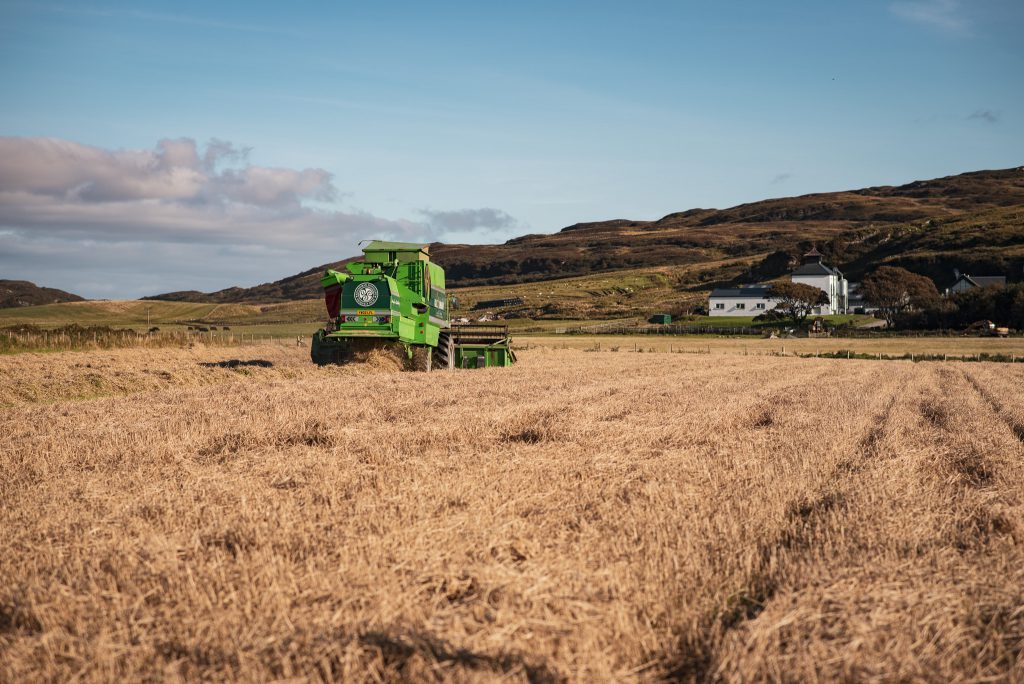
How do the Kilchoman barley yields compare to mainland Scotland?
We have a shorter growing season in comparison to farms on the mainland. We sow the seed later in the year and this is partly due to the geese not leaving until early April. We also have a wetter climate here on the west coast of Scotland and the ground can be cooler than some other parts of the country meaning that the germination and early stage growth can be slower. The main driver for yield is the climate as it tends to be wetter and windier here on Islay in comparison to the farms in central / eastern Scotland with generally cooler temperatures, this lowers the yields by up to ½ tonne per acre. The size of our grains also adversely affects our spirit yields by about 20-30 litres of alcohol per tonne of malt.
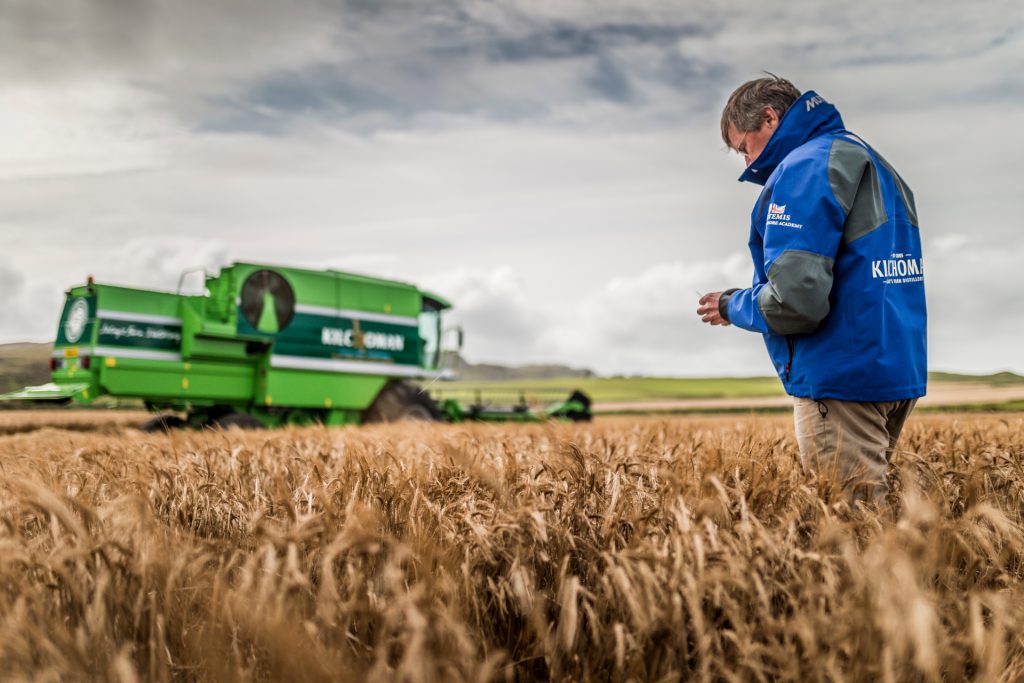
This year you grew Concerto and Sassy barley varieties, were there visible differences between the two?
There were significant differences in the size of the individual barley grains and overall height of the plant. We can only draw conclusions from this once we’ve put the two varieties through the production process, compare the new make spirit and see how those differences develop in the casks.
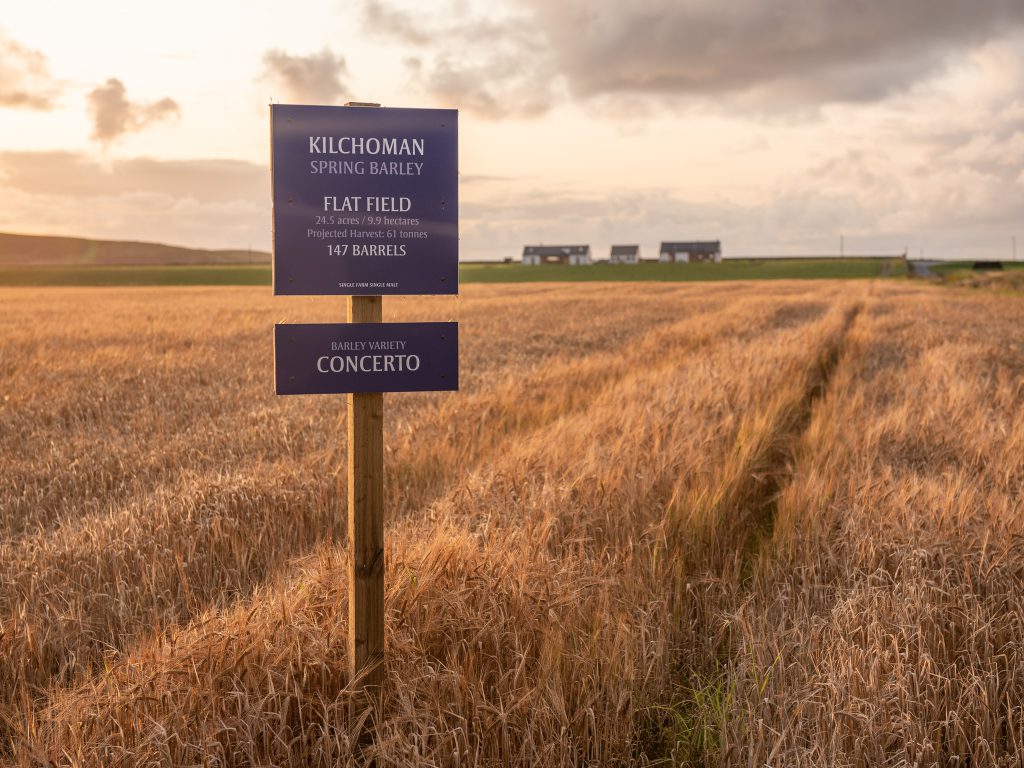
Does the variety of barley effect the spirit off the still?
That is something that we are looking at. We have started to distil the two varieties from our 2018 harvest, Concerto and Laureate, and early spirit runs certainly show there is a difference between the two varieties at the distillation stage. The Laureate has a more malted characteristic compared with lighter more floral Concerto spirit. How this translates into the mature whisky is the key. We hope to showcase this range with future 100% Islay bottlings.

You have tried several varieties, but Concerto seems to be the main stay, can you explain the thinking behind this?
I think initially we wanted to follow the varieties that are used widely in the industry because we knew these were tried and tested. The yields play a part in the decision, but we crucially need a variety that stands up to the weather conditions on Islay, Concerto does this well. But they change every so often and we’ve tried to experiment with several varieties to find the optimum growing variety for our farm. I think since we’ve started, we’ve used four mainstay varieties in the 14 years that we’ve been in production along with other experimental batches. Of all the varieties we tried, Concerto has been one of the best performers in the field but most importantly it distils into a fantastically floral new make spirit which balances well with our other aspects that influence the character such as peat, stills, yeast and of course casks.
What are you looking for from a variety, is it yield or the ability to cope with the environment?
It’s a combination of both. We are looking for a variety that can withstand the weather conditions, but yield is important. I mean, everyone is driven to a certain extent by yields and costs of production has to play a part. However, we are prepared to be a bit more flexible on the approach we have, looking at the different varieties to explore the difference in flavours and aromas from the spirit after distillation and during the maturation process. The varieties we pick need to be on the books of the seed merchants and tested as a good variety for producing malt whisky. It’s then up to us to pick the best seed variety for yield, character and coping with the climate here on Islay.
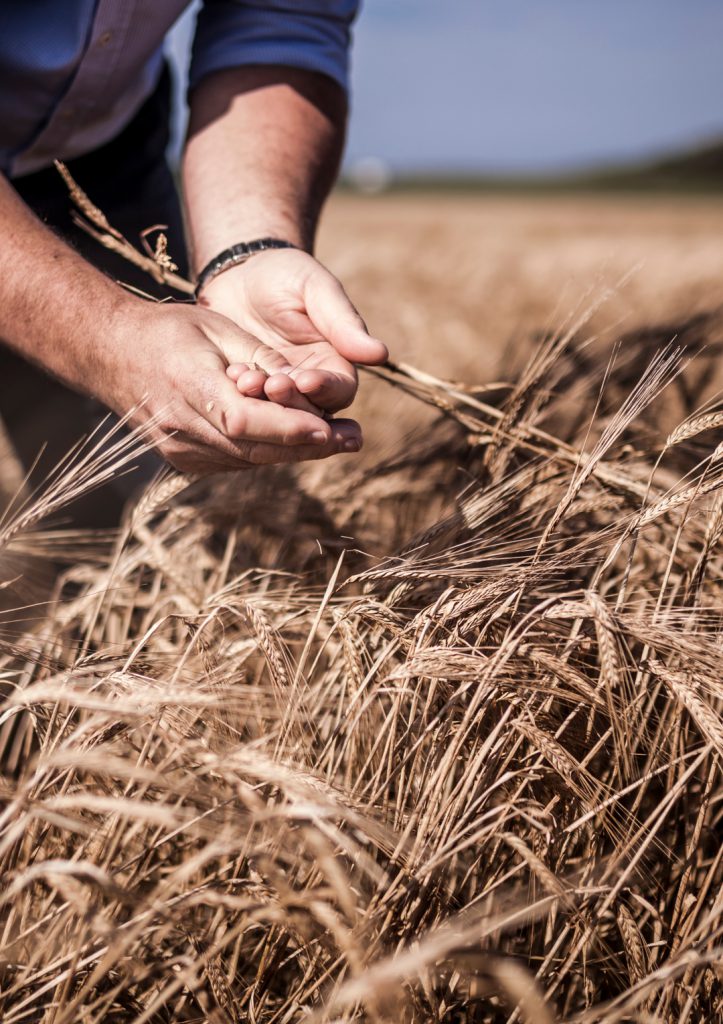
The 2018 crop is being distilled and the Concerto and Laureate varieties have been run through the stills. What, if any, differences have been found in the spirit?
The Laureate is definitely more malt and cereal forward compared to the Concerto which has boiled sweets and citrus characteristics. So yeah, there is a difference and that is significant as far as we’re concerned. It showcases that seed variety will have an impact on the spirit after distillation. It’s early days in trialling the different varieties through distillation but we’re excited about what we’ve found so far.
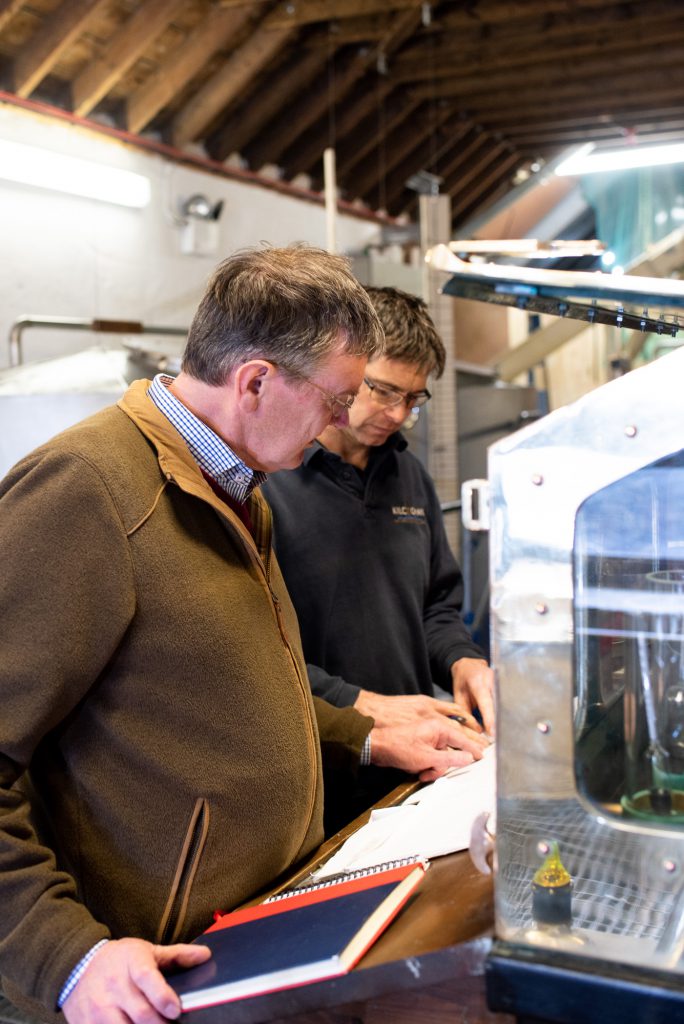
If the variety effects the spirit from the still, will this still be evident after cask maturation or will it be lost to the influence from the wood?
We have seen a fairly clear difference in distillate between barley varieties, however, we are yet to really explore how this develops during maturation. A lot will depend on the cask type and length of maturation. I am sure that some of this varietal character will come through with bourbon barrel maturation however, if we were to mature in a fresh wine or sherry cask then I think the bold flavours of the cask might negate the more subtle characteristics of individual barley varieties. Even with a very subtle difference we will be able to use this when putting together new whiskies to create another layer of flavour.

Are you planning on trying any different yeast varieties to see what impact this has on the spirit?
We’ve trialled many different yeast varieties and there are significant differences in the characteristics of the spirit, perhaps more so than the differences found with different barley varieties. With the exceptions of a period of initial experimentation, we have used Mauri yeast since we first started distilling in 2005. Mauri works nicely with our wort character and fermentation times to encourage the development of lighter floral and tropical fruit characteristics which contrast nicely with the peat smoke which is probably the more dominant part of the Kilchoman style.
I think, it’s useful to trial all sorts of different yeasts to see the different characteristics that come through. We recently trialled some Kerry yeast varieties, Kerry M and Kerry MX. Kerry M created a lot of stoned fruit character whereas MX had a distinct nutmeg note on the back of the palate.
Kerry and other varieties that we have tested are interesting to try however we’ve always come back to Mauri.
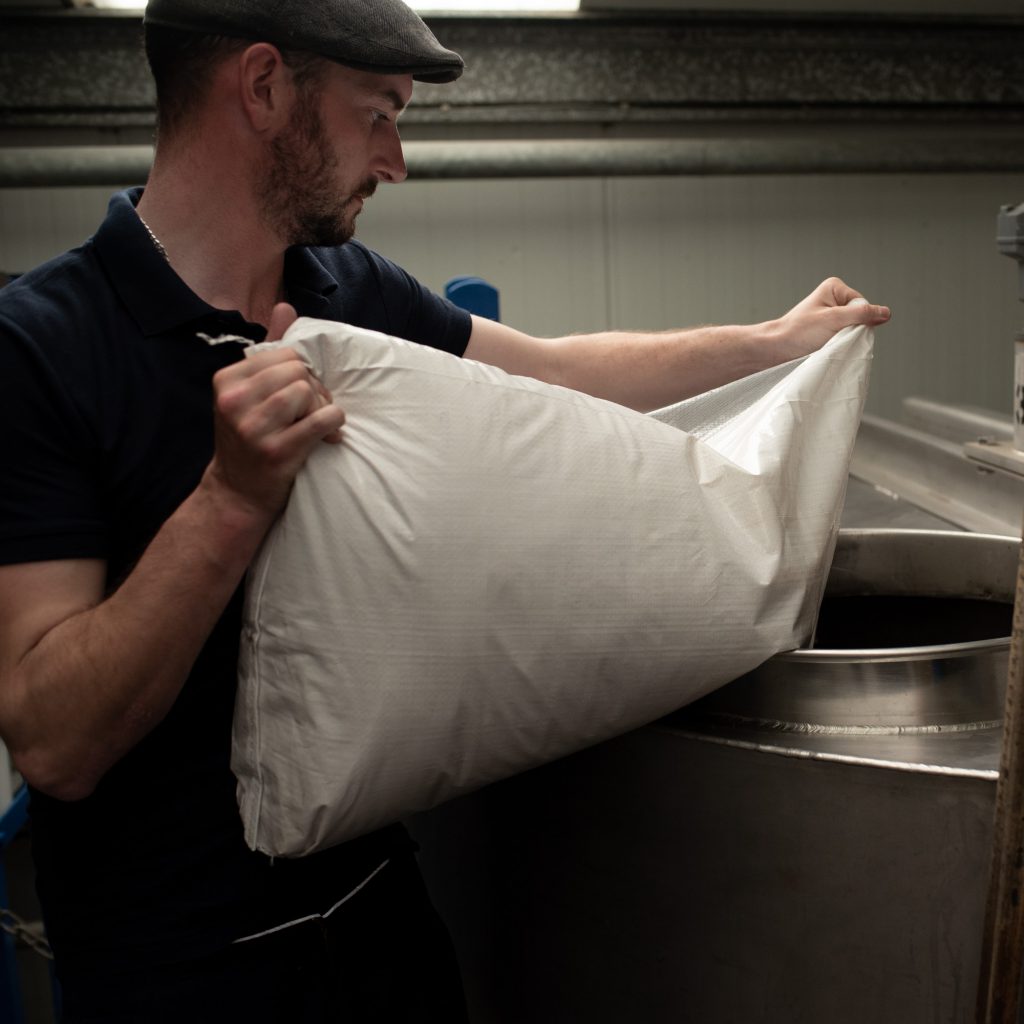
What are your future plans for barley growing? Will there be an increase/ decrease in the amount of Kilchoman barley grown?
We are growing more barley than ever now (about 200 tonnes), and I think we will get to a level that we can grow a maximum of 300 tonnes a year and that’s where we’ll sit. We want to grow as much barley as possible on the farm here at Kilchoman and keep the whisky-making process inhouse.
All Kilchoman barley is used in the 100% Islay range and to date, we have seen mostly sherry and bourbon releases. Are there plans to do any other barrel types?
There will be as we produce a bit more spirit and get a bit more flexibility, we will then experiment with different cask types and separate barley varieties as I mentioned before. At the moment, we’ve stuck with the majority in bourbon and a few in sherry as it showcases the spirit beautifully, especially in ex-bourbon.
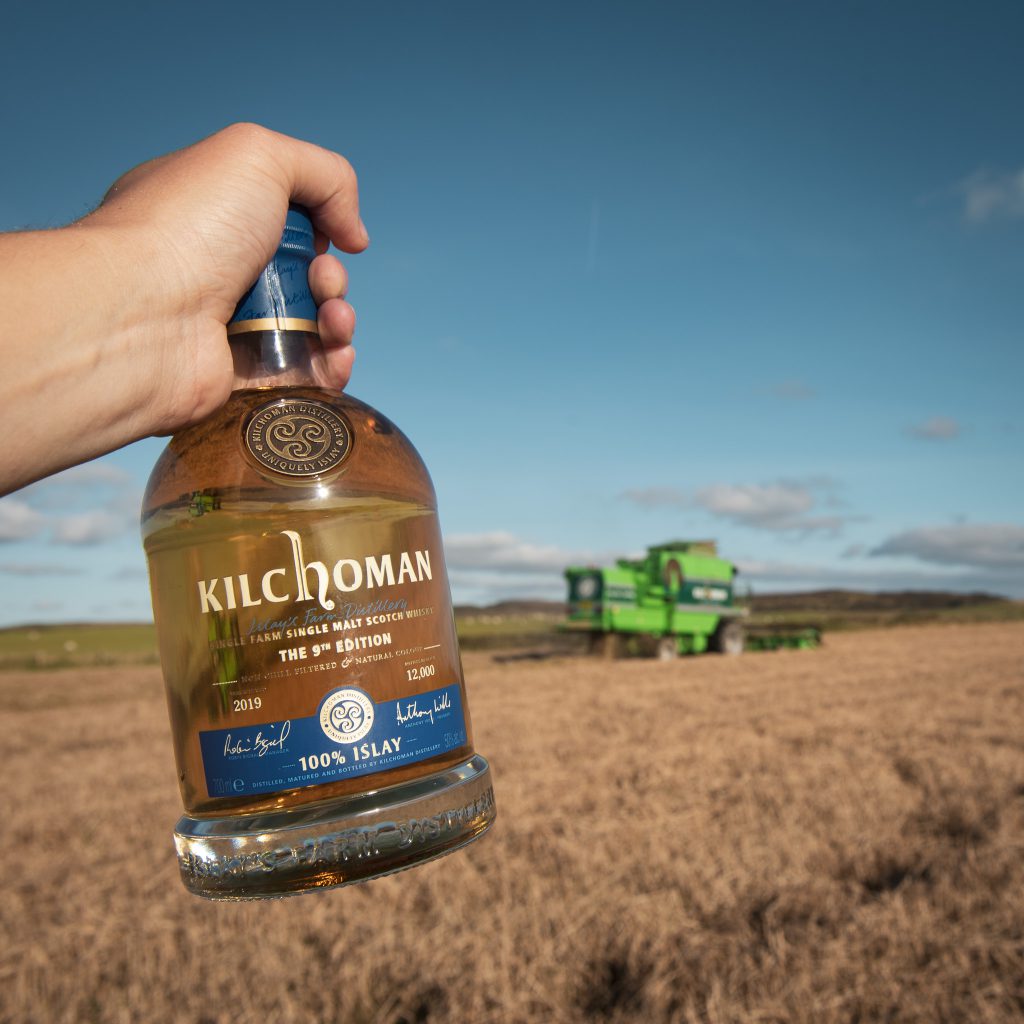
Currently the barley is peated to 20ppm in the 100% Islay range, do you have any plans do a cask filling with no peating, heavily peated or super heavily peated?
Yes, we have plans to do all sorts of experiments with our 100% Islay in the future. We now have the facility to do that with the new still house. We will do completely unpeated distillations and probably more lightly peated as well. We can’t go more than 20ppm just because of the timescale needed for peating in the kiln but changing the peating levels might be considered in the future. The new still house gives us a lot of flexibility in our approach to different styles and characters of our 100% Islay.

100% Islay range is released at 50% ABV, any plans for a cask strength release or to reduce the ABV to 46% to match the core range of Sanaig or Machir Bay?
I don’t think we will reduce it. It sits very comfortably at 50% and it can take that additional strength. Yes, we will look at cask strength releases but with the limited amount of stock we have, we have to be careful not to be short of stock going forward. But yes, the cask strength variety will be something we will do in the future.
Any plans to use Kilchoman barley in the core range products of Machir Bay or Sanaig or perhaps in one of the annual releases like Loch Gorm?
No, absolutely not. We want to keep them separate. We want to showcase the Single Farm Single Malt approach that we began right at the start. It is unique throughout the whole of Scotland and we wouldn’t want to take away from any of the 100% Islay spirit we can produce from barley grown and malted at Kilchoman.
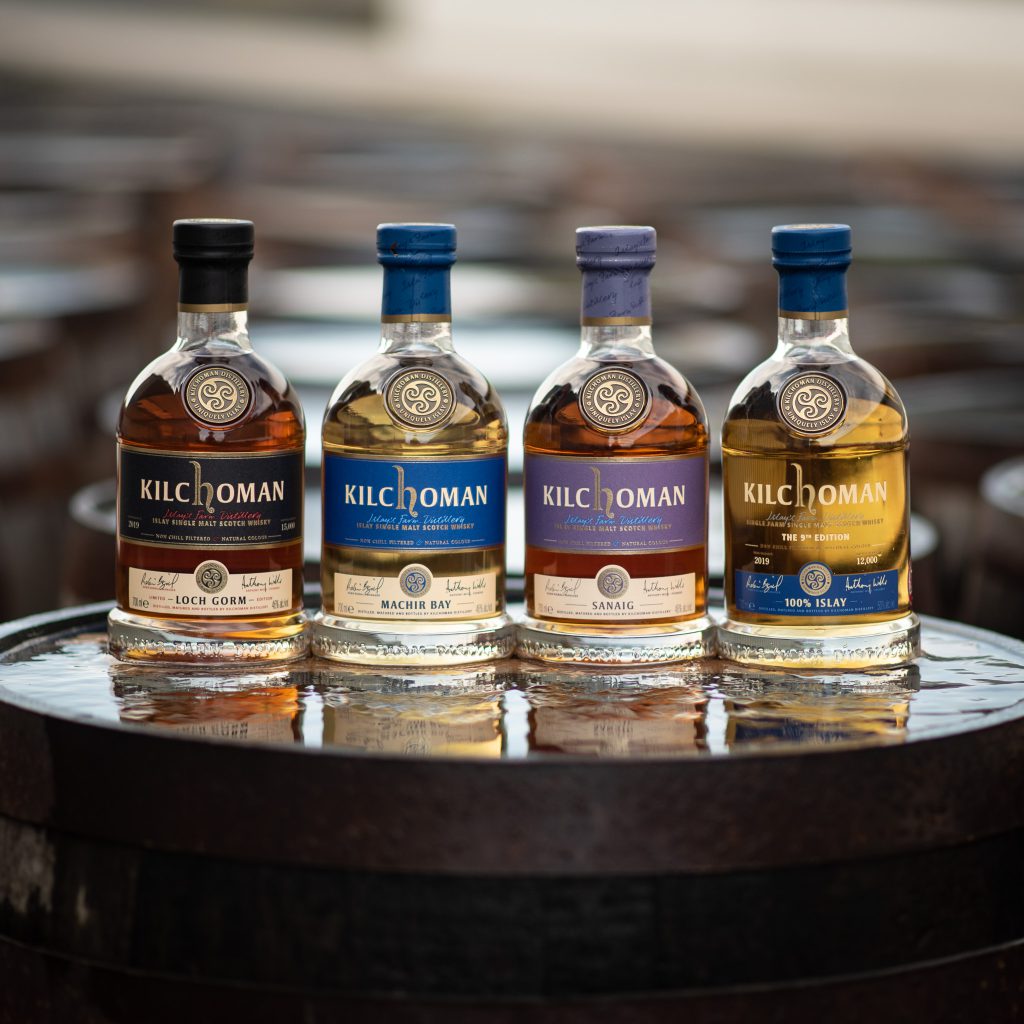
How is your combine driving?
Well, for some reason, they kept me away from the combine harvester. Not sure why. They seem to be combining when I’m not actually on the island. Maybe that’s deliberate! But I’ve always told them it’s just like mowing the grass so I’m not sure why I haven’t had a go yet…
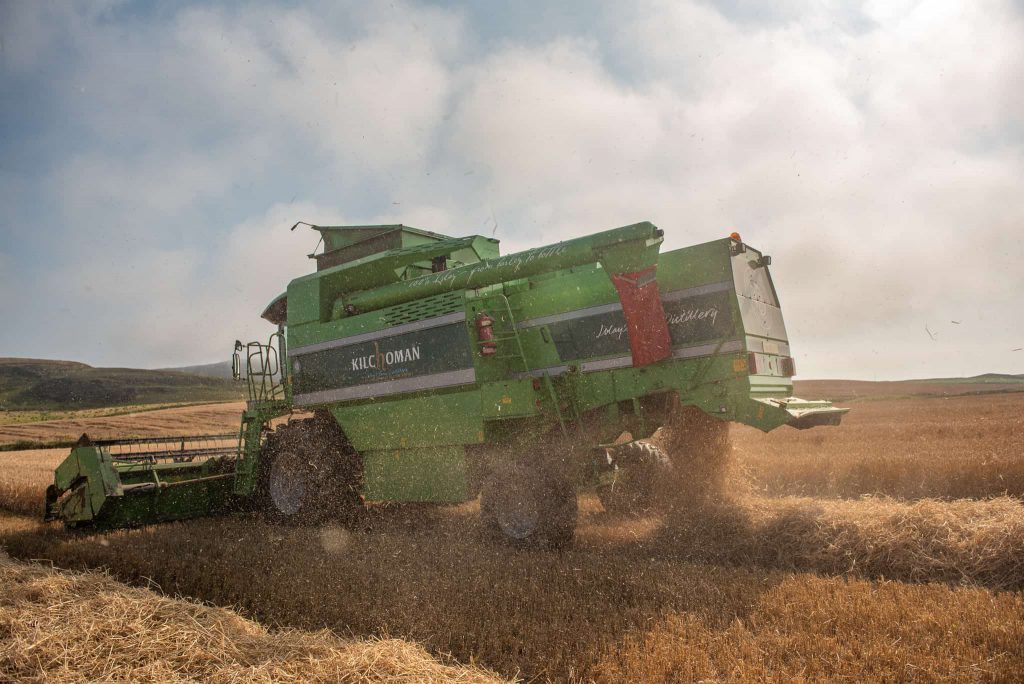
READ NEXT
DISTILLERY NEWS,NEW RELEASES
Machir Bay Cask Strength 2025
Three years since our last Machir Bay Cask Strength release, the 2025 edition is here, and it delivers in every sense. “One of my favourite whiskies we have released, it has everything I love about Kilchoman spirit, with a little extra punch. There will be a lot of happy Kilchoman…
November 4, 2025

